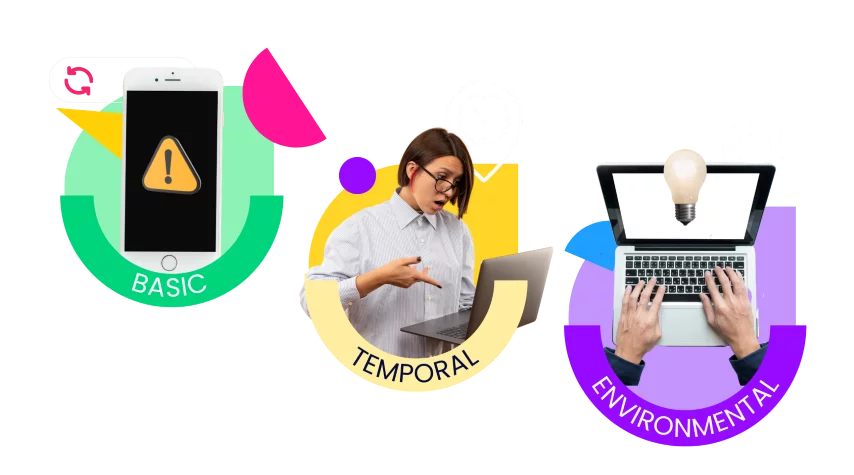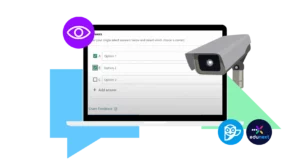Table of Contents
In the first article of this three-part series, Understanding Open edX Security Vulnerabilities, we highlighted practical actions you can take to minimize the risks associated with the top 10 common security vulnerabilities in Open edX. In this Address, we explore the value of using the Common Vulnerability Scoring System (CVSS) Calculator to manage and monitor your Open edX platform for security vulnerabilities.
Vulnerability management is a must as the number of cyber-attacks continues to increase in frequency each year. Here are a few questions to consider:
- Do you know what security vulnerabilities may impact your organization?
- Have you conducted a risk assessment of the security vulnerabilities regarding company assets and your Open edX platform?
- Have you defined roles and responsibilities for dealing with and monitoring security vulnerabilities?
It is important to monitor your Open edX platform for any potential security vulnerabilities and patch them immediately. This includes regularly monitoring the Open edX platform, reviewing logs and audit trails, and testing the platform for vulnerabilities. Vulnerabilities in software are remediated with proper security measures only if their severity and impact are effectively identified to ensure that your organization addresses the most critical severities that need immediate attention. Let’s discuss why the CVSS is useful for this purpose.
What is the Common Vulnerability Scoring System (CSVV) Calculator?
The Common Vulnerability Scoring System (CVSS) Calculator is one tool to assess, characterize, and score the severity of security vulnerabilities that may impact your platform. To understand how this works, First.org provides a user guide that explains how it works and includes a calculator and scoring rubric, as well as CVSS scores. In short, the CVSS is an open framework for communicating the characteristics and calculating the severity of software vulnerabilities using three metrics (numerical scores): Base, Temporal, and Environmental. Once the Base Score is established, the temporal and environmental scores are computed in sequence: Base Score to Temporal Score, and Temporal Score to Environmental Score.
Base Score
Reflects the characteristics of the vulnerability, which remains the same across user environments. The base score assumes the reasonable worst-case impact across different deployed environments. Base metrics cover exploitability metrics, the scope of a possible vulnerability affecting other system areas, and the impact caused by an attack concerning confidentiality, integrity, and availability.
Temporal Score
Represents the characteristics of the vulnerability that change over time, regardless of a user’s environment. Temporal metrics assess the current exploitability and the availability of remediating factors, based on exploit code maturity, remediation level, and report confidence.
Environmental Score
This represents the characteristics of the vulnerability while considering the user’s environment, which allows the organization to customize the base CVSS score depending on security requirements and modification of base metrics about confidentiality, integrity, and availability requirements.

Use CVSS to Monitor Your Platform
IT teams must proactively assess security weaknesses, minimize vulnerabilities, and resolve them before they hurt the organization. CVSS allows the organization to use the same scoring framework to rate the severity of IT vulnerabilities across various software products and prioritize its efforts to remediate the vulnerabilities.
CVSS scores help an IT team identify security weaknesses and address them.
Here are three common uses of CVSS scores:
Quantify the severity of vulnerabilities
CVSS scores range from 0-10, with 10 being the most severe. Use the score provided to focus on more serious security threats first, and then address minor weaknesses, time permitting. This measurement is a reliable starting point from which to categorize, prioritize, and create an action plan. Yet, be mindful that a score may not reflect the actual impact a security threat could cause due to a lack of information needed to assess the risks more thoroughly.
Understand more about each vulnerability
Learn more about a vulnerability so that you can work towards a solution. Further your understanding of common security vulnerabilities and how CVSS compares with another vulnerability assessment by reviewing the Common Vulnerabilities or Exposers (CVE) and providing a public list of cybersecurity vulnerabilities, including descriptions, dates, and other information available.
Support patch management efforts
Use the CVSS score to plan, prepare, and resolve security vulnerabilities before threats wreak havoc on your organization.
Monitoring your platform for vulnerabilities is important for several reasons:
Early detection of vulnerabilities
Address vulnerabilities and implement patches or other security measures before an attack occurs in a timely manner.
Reducing the risk of security breaches
Prevent attackers from gaining unauthorized access to your system or stealing sensitive data by identifying and addressing vulnerabilities.
Maintaining customer trust
Customers expect organizations to take security seriously and protect their data. Demonstrate your commitment to security and maintaining customers.
Complying with regulations
Many regulations and industry standards require organizations to monitor their systems for vulnerabilities. Ensure you comply with these regulations and avoid potential penalties or fines.
Overall, monitoring your platform for vulnerabilities is an important part of maintaining the security of your system and protecting your organization from potential security breaches. What about organizations seeking ISO 27001 certification, would the CVSS be useful?

CVSS and Vulnerability Management
Management of potential technical vulnerabilities and related security gaps is addressed in ISO 27001. You may use the CVSS to identify and remediate security vulnerabilities, which may be associated with or a result of technical vulnerabilities. The CVSS is a reliable tool to assess and remediate security threats whether your organization is pursuing ISO 27001 certification or not. It is also a best practice to establish a more robust system to manage vulnerabilities. Any vulnerabilities identified are documented in the information security management system (ISMS), where threats are defined and addressed accordingly to severity. The goal is to have a structured system for establishing, implementing, maintaining, and continuous improvement for an information security management system that addresses and mitigates security vulnerabilities.
First.org provides the user guide, including the specification documentation and metric equations you must consider when establishing your base scores. Examples of CVSS scoring in practice are available for your review.
Vulnerability management is an ongoing assessment process. Yet, you can use the information to understand the security vulnerabilities that directly impact your organization.
A few action items to consider:
Document who in the organization will be responsible for monitoring technical vulnerabilities and related security issues.
Establish an Information Security Management System action plan that will meet the needs of your organization.Create the technical documentation or spreadsheet templates you will need to track and monitor your process and findings. This documentation will record your security vulnerabilities, CVSS scores, comments, and itemized action plans.
Establish a schedule for the reassessment of known or new vulnerabilities.
Document action plans and track progress and results.
The key is to regularly monitor your Open edX platform for security vulnerabilities and assess whether the actions you implemented to remediate issues are sufficient and will minimize or avoid current and future risks.
Conclusion
In conclusion, it is practical and essential to use the CVSS calculator to ensure that your Open edX platform is secure and that your organization is ready to remediate any potential security threats. You can take proactive steps to secure your e-learning platform and be prepared to confront new threats that may arise in the future by regularly monitoring for security vulnerabilities. Remember, being proactive is key when it comes to security – use the CVSS and begin remediation for probable risks today.
Edunext is continuously devoted to the security and smooth operations of the Open edX platform. Rest assured that we have a dedicated team diligently overseeing the operations 24/7, ensuring that any potential security vulnerabilities and issues are promptly addressed.
How useful was this post?
Click on a star to rate it!
Average rating / 5. Vote count:
No votes so far! Be the first to rate this post.













